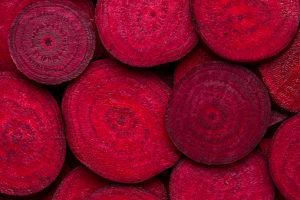
The color of your diarrhea can help provide valuable insight as to the possible cause. This article will cover everything about red diarrhea including its causes, symptoms, risk factors, diagnosis, and how to treat it.
Causes and complications of red diarrhea
There are a wide variety of causes for red diarrhea ranging in severity. For example, red diarrhea could simply be a result of overconsumption of red food or beverages. On the other hand, it could be a sign of norovirus. Common causes of red diarrhea include:
Rotavirus
Some people refer to rotavirus as the stomach flu. It can present as red diarrhea, fever, vomiting, and abdominal pain.
Gastrointestinal bleeding
Conditions like constipation, diverticulitis, hemorrhoids, inflammatory bowel disease, intestinal infection, and stomach ulcers can cause gastrointestinal bleeding, which will present itself as red diarrhea. The severity of the bleeding will determine how your diarrhea will look in color. Blood directly from the anus will appear bright red.
E. coli infection
E. coli bacteria will not only result in diarrhea but can sometimes turn diarrhea red. E. coli can be contracted by eating undercooked meat, drinking raw milk, or eating foods that have been infected with animal feces.
Anal fissures
Inflammation can lead to tears around the anus, which can contribute to blood in the stool.
Cancer polyps
Excess bowel movements may irritate polyps—growths around the colon—which could be a sign of colon cancer. This type of bleeding isn’t typically seen by the naked eye and is within the stool.
Side effect of medication:
Some medications may contribute to gastrointestinal bleeding or disrupt the stomachs bacteria, which can lead to red diarrhea.
Consuming red food or drinks
Red dye found in some foods and beverages can result in your stool appearing red. So, if you consume plenty of beets, don’t be too concerned if you’re seeing red.
Norovirus
Norovirus is very contagious and can lead to instant illness often resulting in red diarrhea.
Pre-existing disease
Some patients with diabetes, autoimmune diseases, or inflammatory bowel disease may experience red diarrhea.
Lifestyle factors
Your risk of developing red diarrhea can increase if you don’t wash your hands prior to preparing food, if you consume high amounts of red meat, or suffer from constipation.
Symptoms and risk factors for red diarrhea
Other symptoms that may accompany red diarrhea include abdominal pain and cramping, nausea, fatigue, and fever. Symptoms will be related to the cause of your red diarrhea.
Risk factors for red diarrhea include poor hygiene and not washing your hands with soap, having diabetes, inflammatory bowel disease, eating large amounts of red meat and fiber, and drinking poor quality water, which can lead to infection.
How to diagnose red diarrhea
If you figured out that diet isn’t the cause of your red diarrhea, this means there is blood in your stool. Your doctor will test your feces to measure the amount of blood being released, along with checking for any bacteria or other causes of infection.
How to treat red diarrhea
Treating red diarrhea is based on combating the underlying cause. If your red diarrhea is caused by diet, either stop consuming foods and beverages that are bright red or don’t be worried by the sight of red stool.
If the cause is infection-related, your doctor will prescribe you medications like antibiotics.
In some cases like norovirus or E.coli, the virus will pass on its own and it is recommended that you avoid contact with others as to not spread the virus. If you do become dehydrated, you may need to be hospitalized.
If your red diarrhea is related to anal fissures or constipation, it’s important that you increase your fiber and water intake so that your stools aren’t hard.
If your doctor suspects gastrointestinal bleeding, they will have to examine your symptoms along with running further tests to determine the cause and course of action in regards to treatment.
When to see a doctor
Red diarrhea isn’t always a cause for concern, but you should see a doctor if you also experience dizziness, fatigue, gastrointestinal discomfort, difficulty breathing, disorientation, fainting, high fever, severe stomach pains, vomiting or blood, your red diarrhea doesn’t improve within a few days, or if you suspect that you are dehydrated.
Prognosis for red diarrhea is generally good, and as long as you have yourself looked at early on, treatment is effective and you can reduce the risk of any complications or long-term problems.
Related:
Burning during and after diarrhea: Causes and how to stop burning diarrhea
What causes nocturnal diarrhea? Symptoms, treatment, and home remedies for nighttime diarrhea